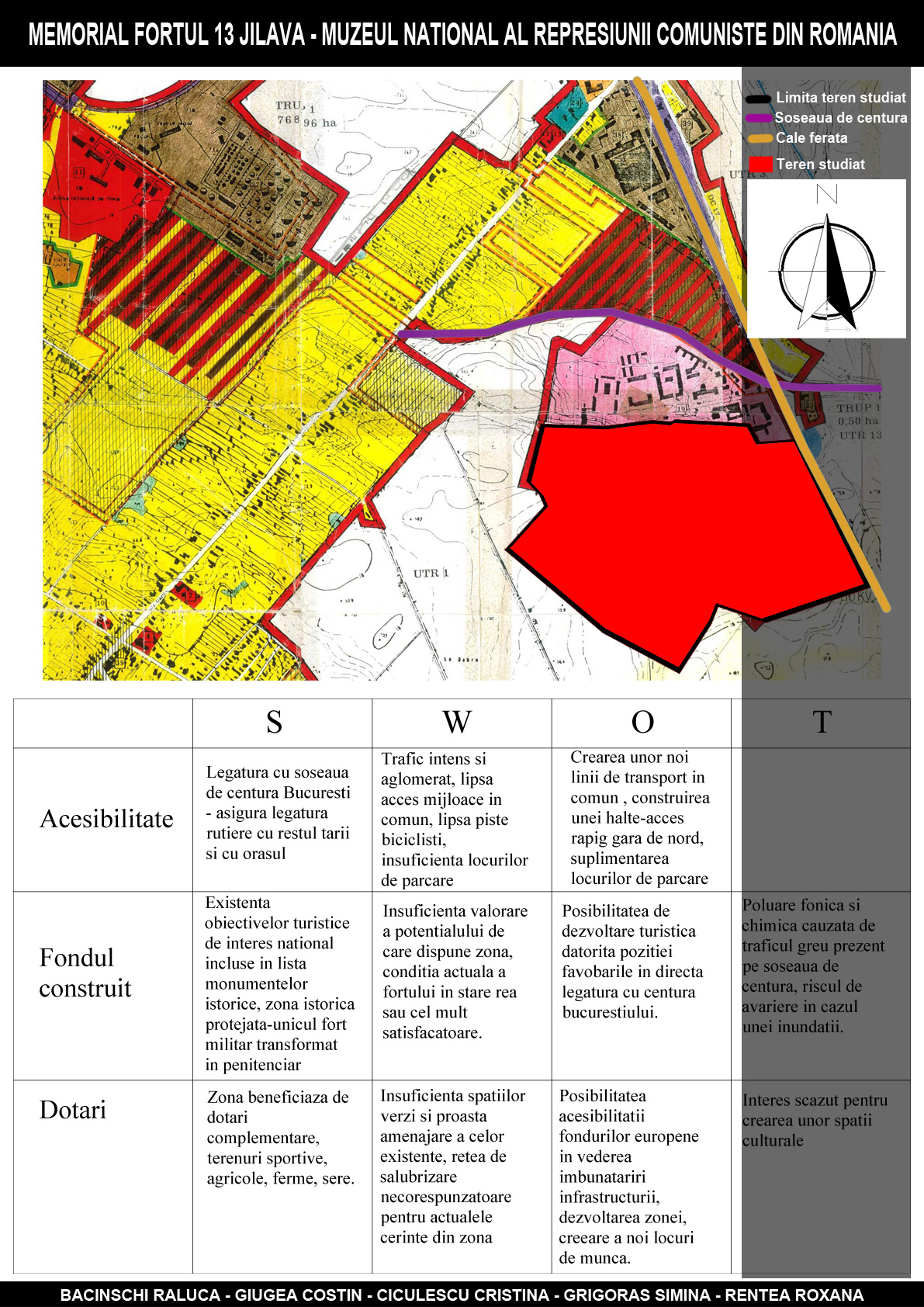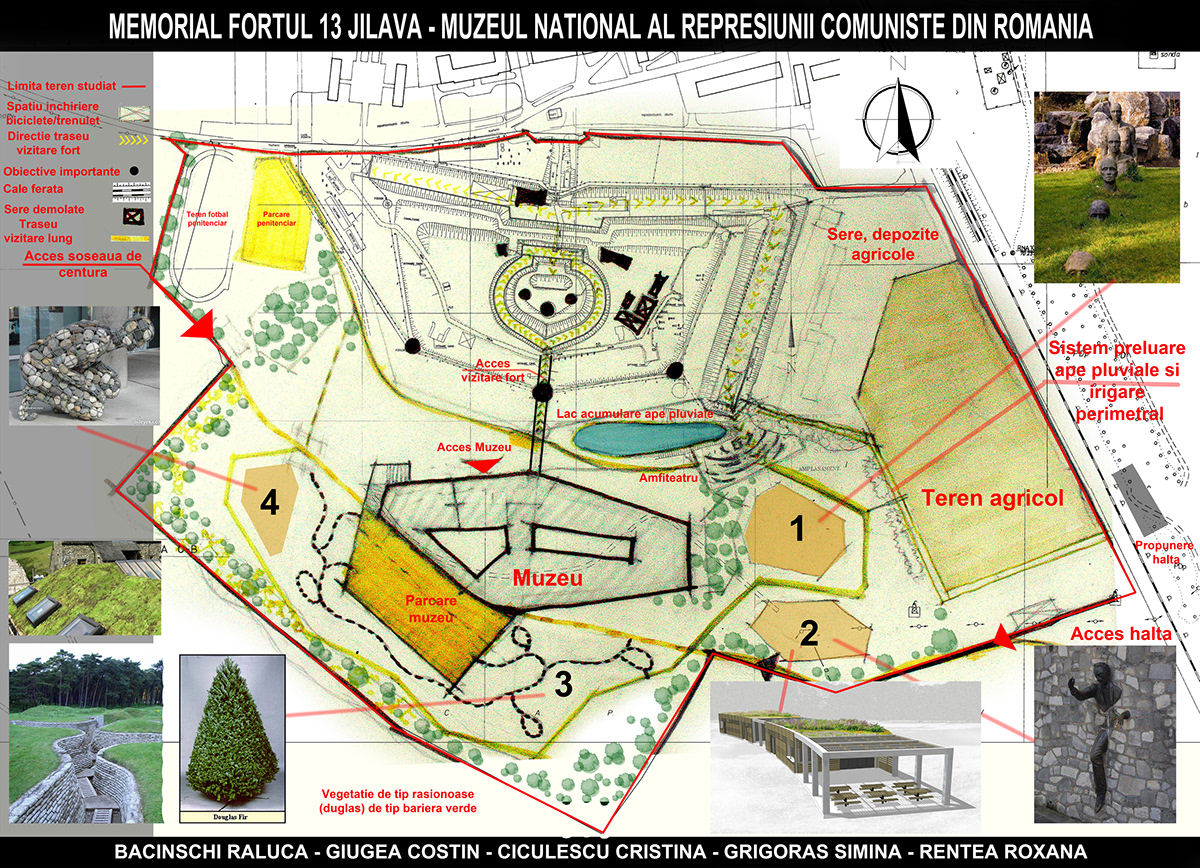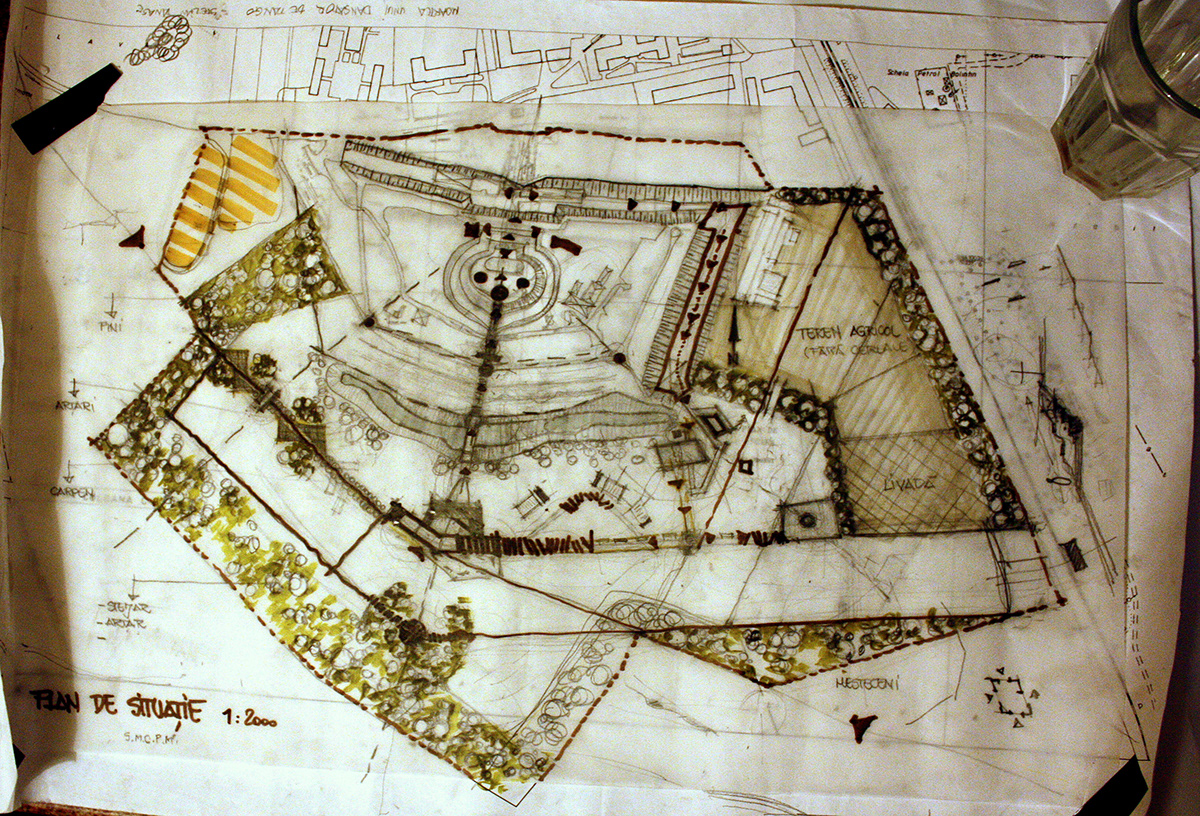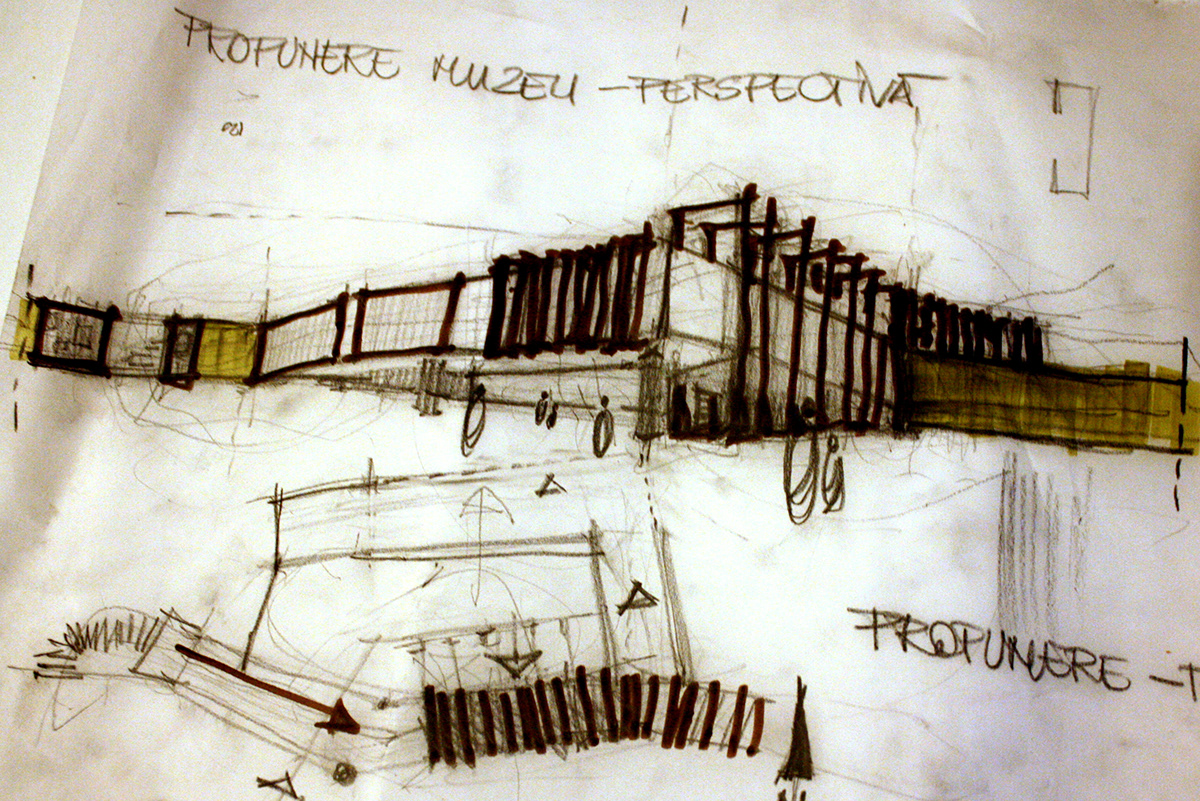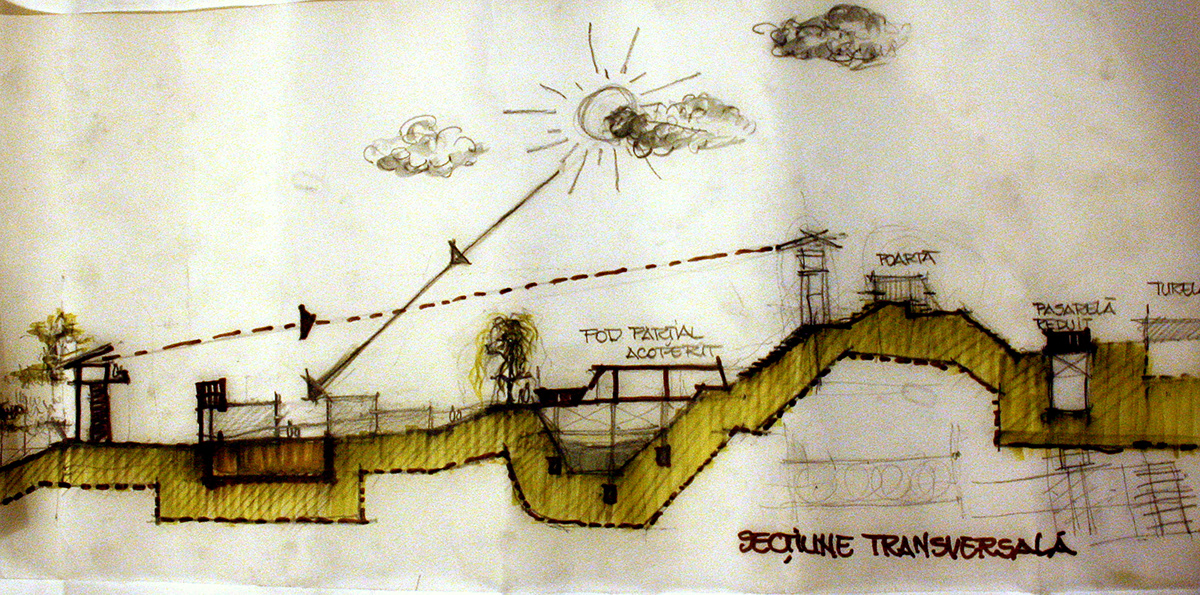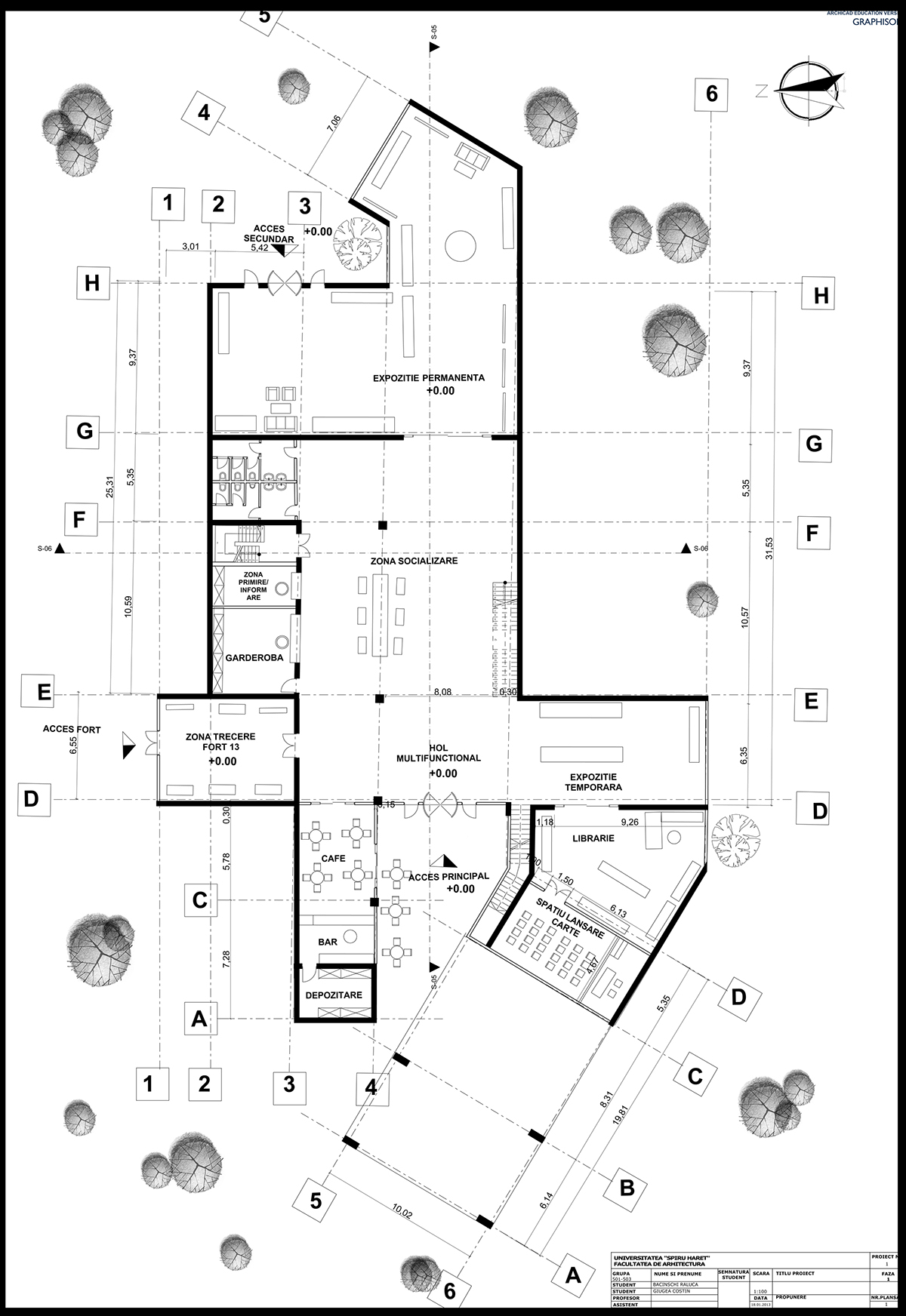
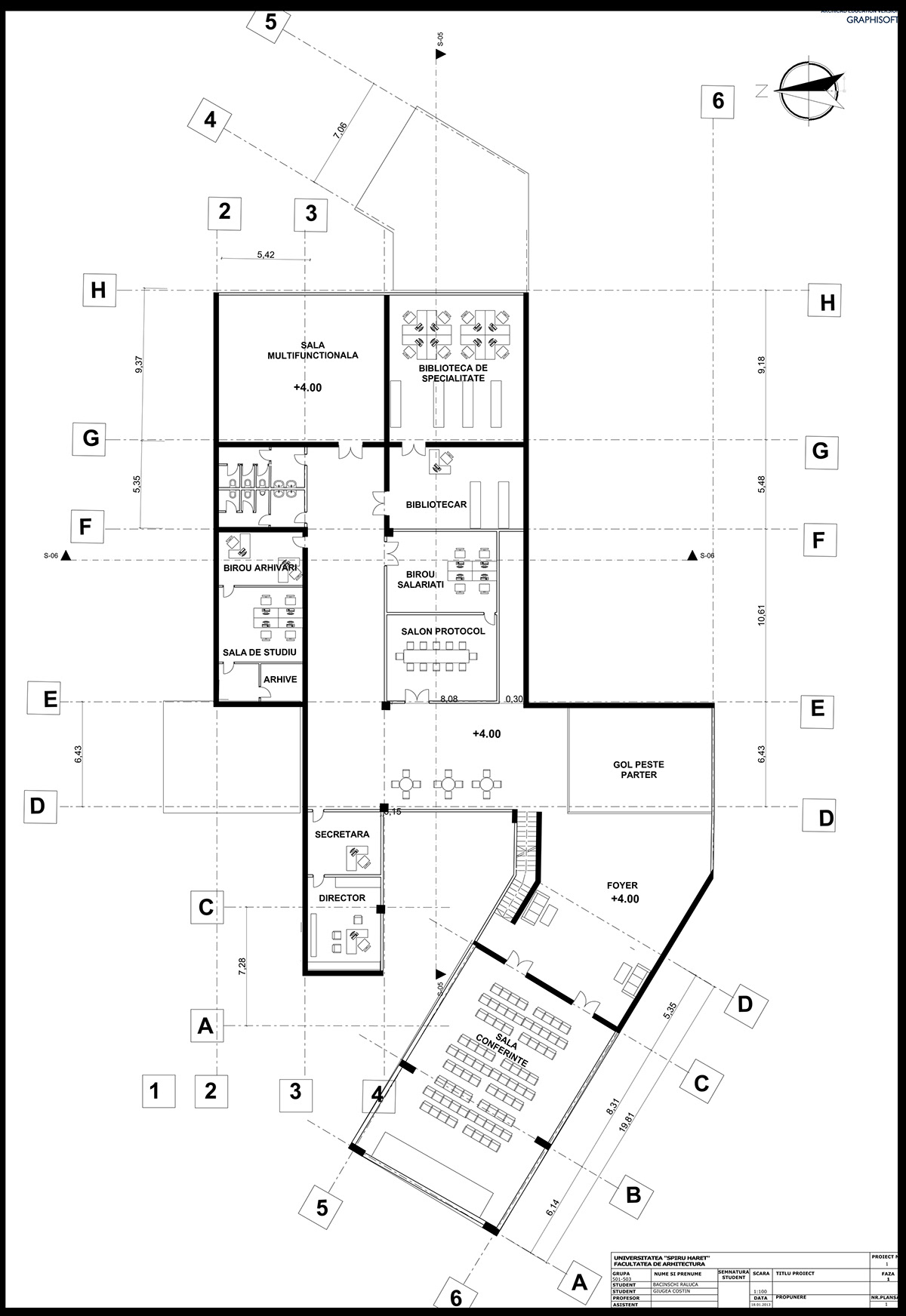
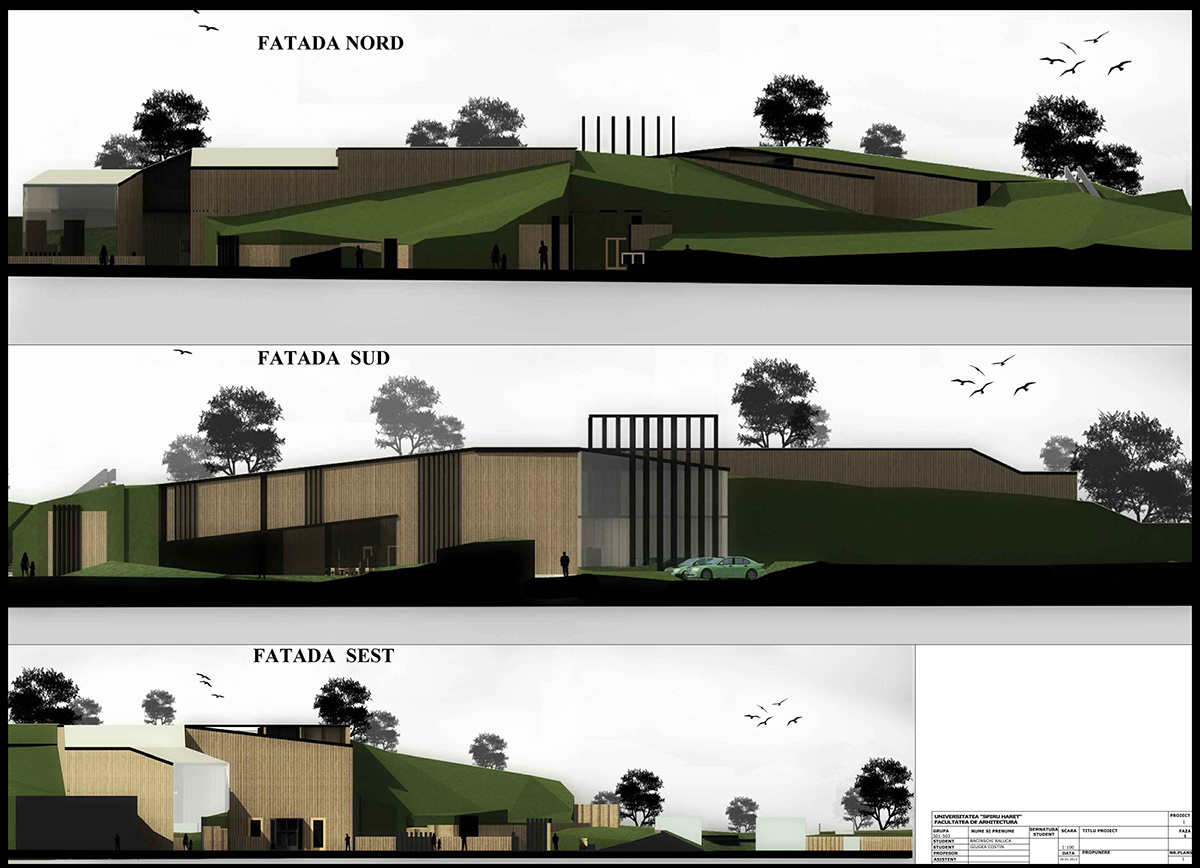
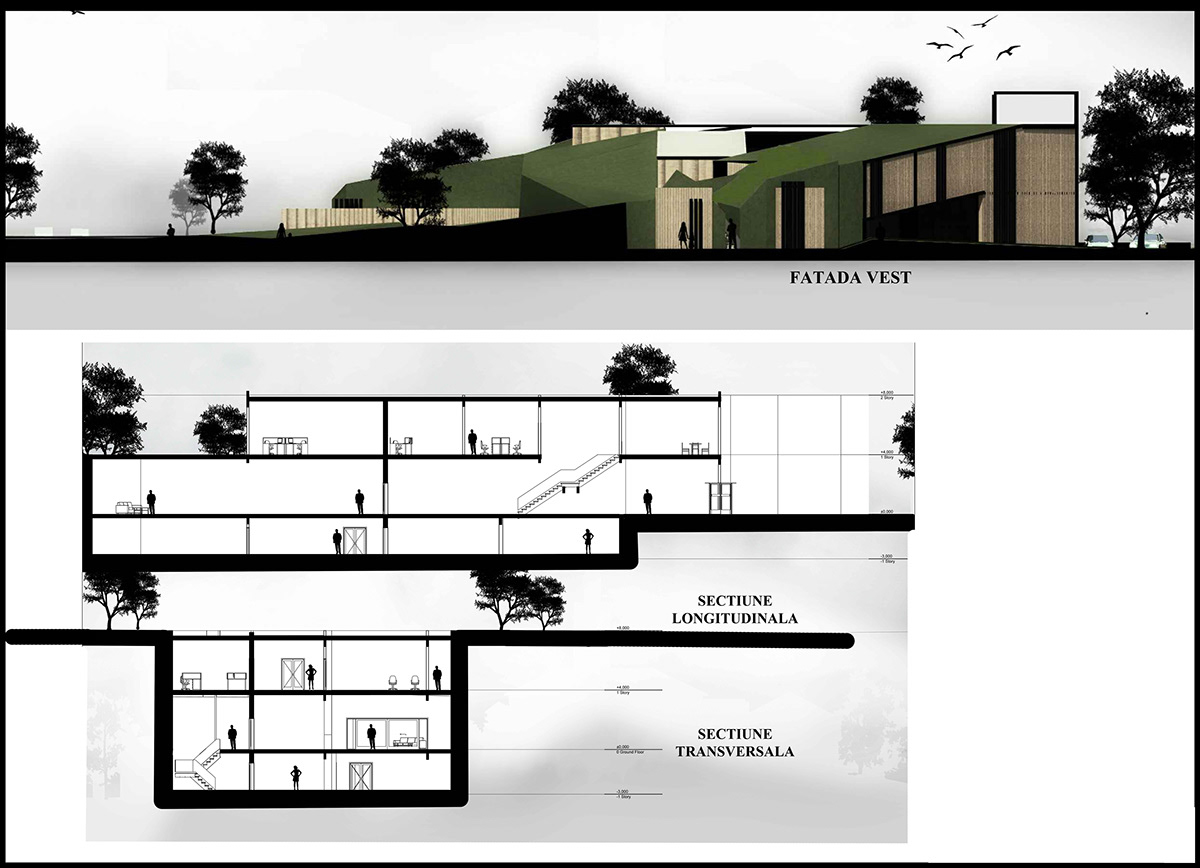
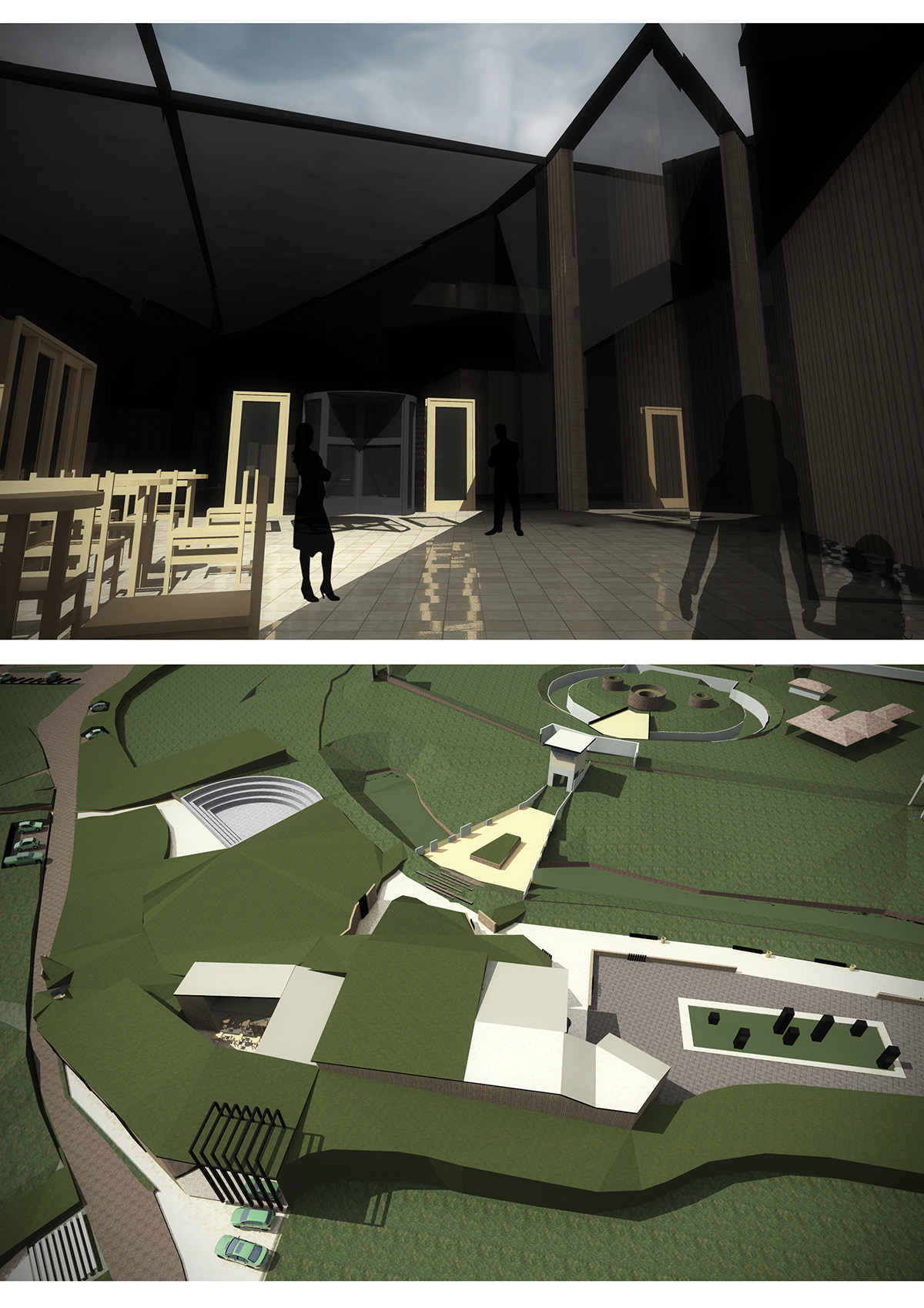
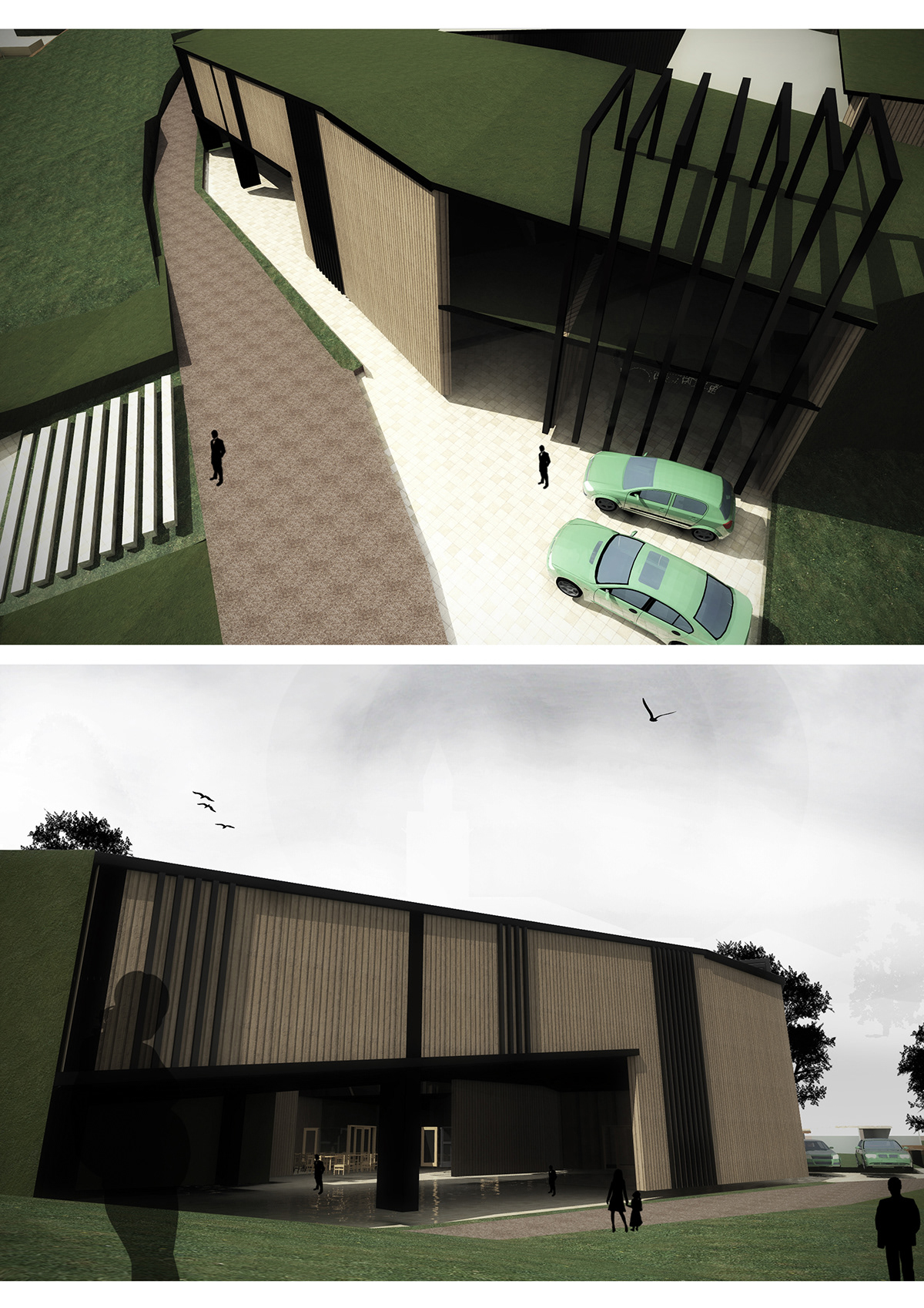
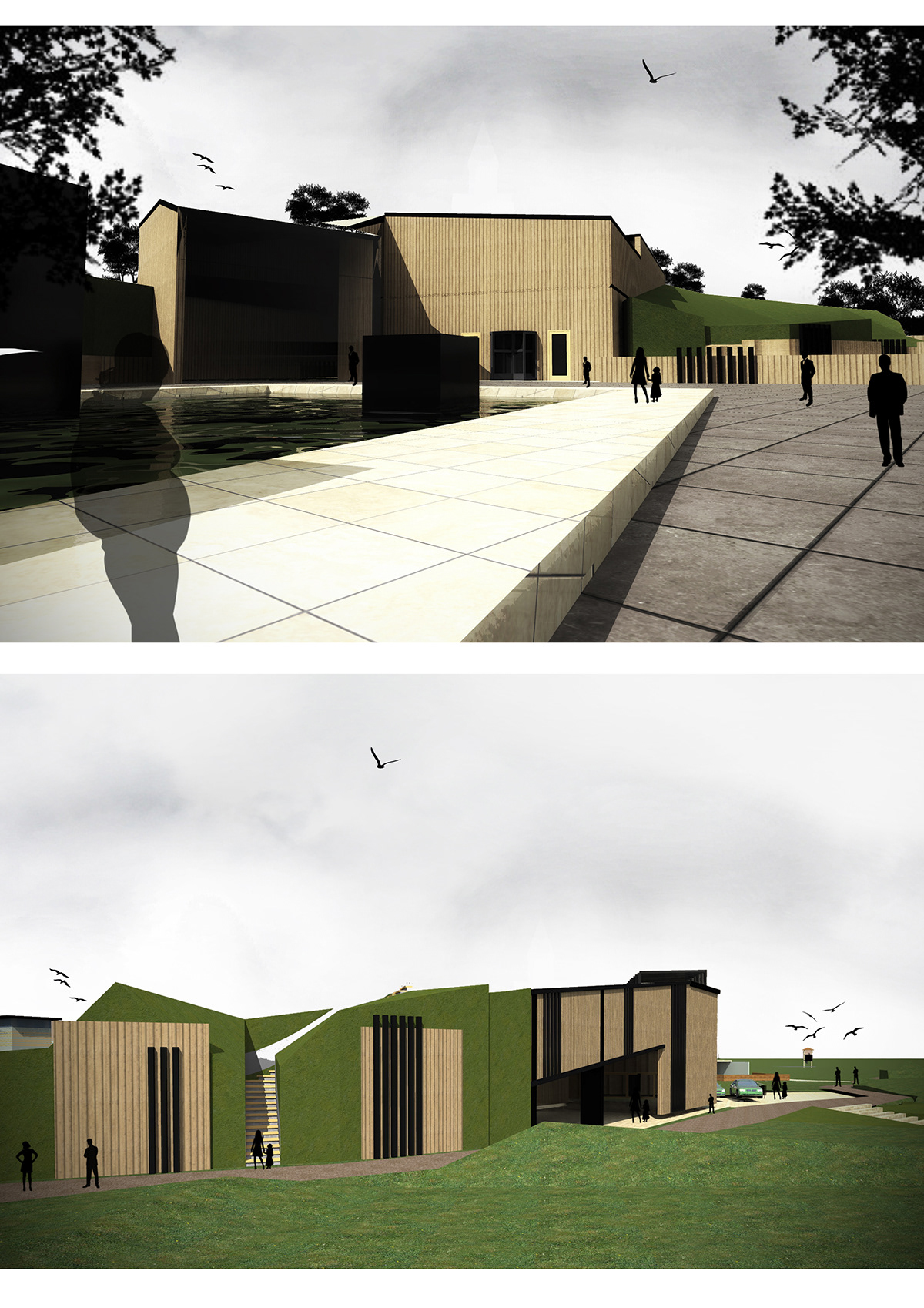
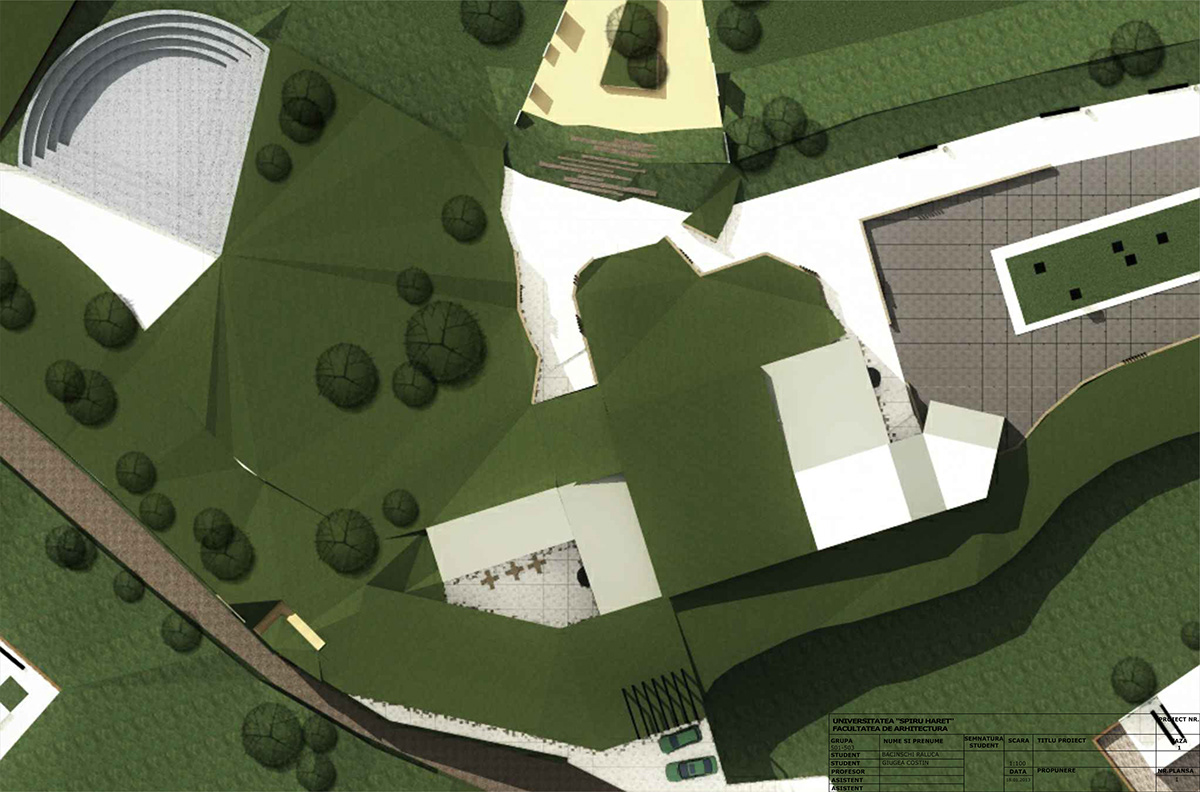
Memoriu Fortul 13 Jilava
Proiectul abordeaza o tematica complexa referitoare la analizarea Fortului 13 Jilava, obiect patrimonial si memorialistic, parcurgand diferite paliere de studiu in scopul propunerii unei solutii generale de amenajare.
Fortul 13 Jilava se inscrie in seria celor 18 obiective cu functiune strategica care alcatuiau la sfarsitul secolului XIX centura de aparare a Bucurestiului. Proiectate de inginerul belgian Henri Alexis Brialmont asistat de inginerul roman I. Culcer la comanda Regelul Carol I, centura defensiva reprezenta la acel moment un sistem complex si unic alcatuit din forturi (constructii defensive cu o planimetrie elaborata) si baterii (constructii cu o planimetrie mai simpla) ce aveau ca scop intarirea din punct de vedere strategic al zonelor perimetrale orasului. La scurt timp dupa finalizare, aceste edificii isi pierd scopul initial odata cu avansul luat de tehnica militara (in special artileria si aviatia), ele fiind concepute pentru a asigura rezistenta in fata unui atac terestru.
Dintre toate cele 18 obiective, un destin aparte l-a avut fortul 13 Jilava care a fost transformat in penitenciar, initial militar iar mai apoi pentru detinutii politic, pe vremea regelul Carol al II-lea. „Beneficiind” de unul din cele mai dure sisteme represive, aceasta destinatie este preluata ca atare atat de regimul Antonescu cat si – ulterior – de cel comunist. In aceasta ultima perioada, fortul 13 Jilava reprezinta locul de suferinta si martiraj al unui numar covarsitor de personalitati a vietii culturale si intelectuale ale epocii.
Pe baza acestor informatii istorice, am alcatuit ceea ce am denumit mai tarziu Memorialul Fortului 13 Jilava dedicat victimelor comunismului. Prima tentativa a fost sa recream liniile majore pe care le descria forma fortului si sa le reproducem pe teren, neluand in considerare adevarata valoare a terenului pregatit pentru un fort militar, si anume topografia sa. Curbele de nivel astfel descoperite ne-au ghidat traseele carosabile si pietonale, de-a lungul malurilor de pamant. Directiile de forta majora au indicat si accesul cel mai indicat pe sit, pe o artera secundara ce se bifurca din circulatia principala catre penitenciar.
Relatia cu fortul am preferat sa o mentinem pe principiul axialitatii, al asimetriei si compozitiei libere. O linie majora de interes se intrevede totusi, gradand ascendent experienta vizitatorului pana la intrevederea cu Fortul: tunel, pod, poarta-pasaj, pasarela. Accesul in fort am preferat sa il mentinem suprateran pentru a profita de ceea ce putem regasi pe sit: frumusetea cadrului natural si pentru ca accesul punctual a fost considerat unul mai facil, nestiindu-se nici starea actuala a tunelurilor subterane, nici comportarea lor in timp si dorind a evita supozitiile. Muzeul este integrat in malul de pamant, neiesind in evidenta prin masivitate, continuand linia de orizont presetata de natura. Adaptarea la teren a fost conceptul meu, in speranta ca si terenul se va adapta la randul sau.
Museum for the 13th Fort Jilava Prison
The project addresses a complex topic on Fort 13 Jilava analysis, heritage and memorial object, covering different levels of study in order to propose a general planning solutions.
Fort 13 Jilava enroll in the series of 18 strategic objective function that made up the late nineteenth century defensive belt of the city. Belgian engineering projects assisted by the engineer Henri Alexis Brialmont Roman custom Culcer I. King Charles I, belt defense at that time represented a complex and unique system consists of forts (defensive building with elaborate planimetry) and battery (built with a planimetry May simple) that aimed to strengthen the strategic perspective of areas within the city.
Shortly after completion, these buildings lose their original purpose with advance taken for military (especially artillery and aviation), which are designed to provide resistance to attack Earth. Of all the 18 targets, a special destiny had 13 Jilava fort that has been converted in prison, initially for military and then political prisoners in the days of King Charles II. "Benefits" of one of the harshest repressive systems, this destination is taken as such so Antonescu regime and - later - not communist. In this last period, the fort 13 Jilava is the place of suffering and martyrdom of a number of personalities overwhelming cultural and intellectual life of the era.
Based on historical information, I made what I later called Fort 13 Jilava memorial dedicated to the victims of communism. The first attempt was to recreate the major lines that we described as the fort and reproduce them on the ground, disregarding the true value of the land prepared for a military fort, namely topography. Such contours discovered guided us and pedestrian routes, along the banks of earth.
Directions of force majeure and access the indicated indicated on the site, a secondary artery which bifurcates from the main flow to prison. Relationship with Fort I preferred to maintain the principle axialitatii, asymmetry and composition of the free. A major line of interest in sight yet, gradand ascending visitor experience to meeting with Fort: tunnel, bridge, gate-passage bridge. Access to the fort we preferred to maintain above ground to take advantage of what you can find on the site: the natural beauty and because the access point was considered one easier, not knowing any current state of underground tunnels or their behavior while and wishing to avoid assumptions. The museum is built on the banks of earth neiesind out by massive, continuing skyline preset nature. Adapting the concept of land was our land in the hope that it will adapt to us.
Analiza sitului - schite concept
The analyse of the project site - sketches concept
